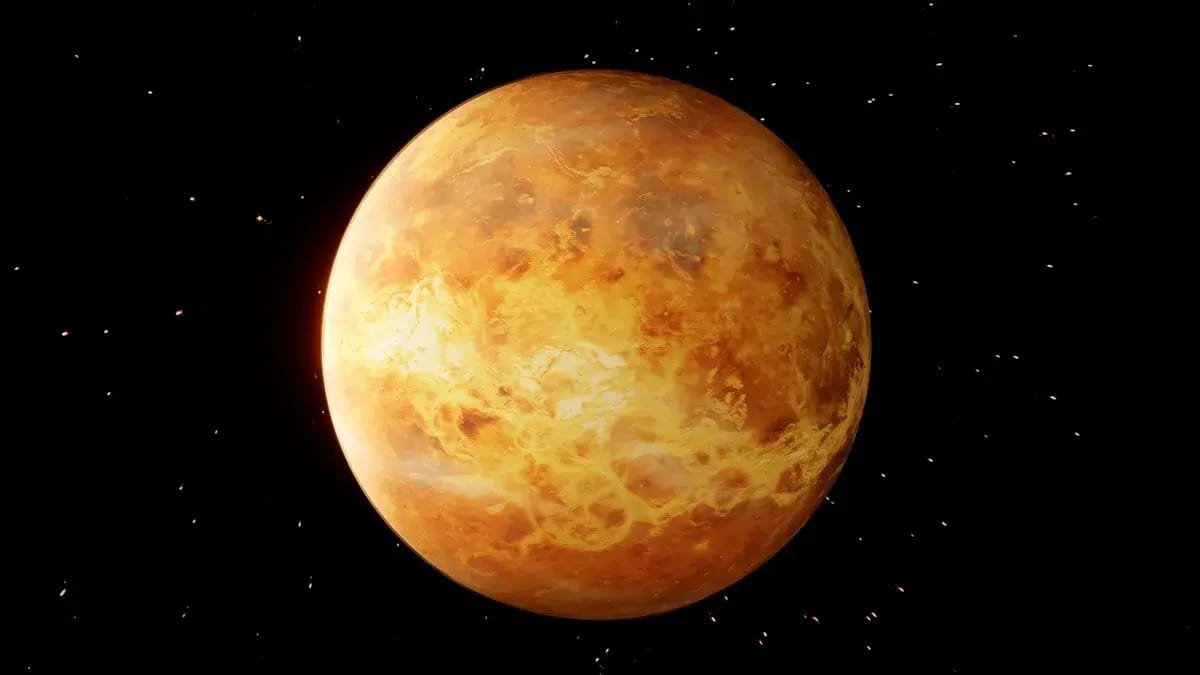On Venus, it snows metal. The planet’s intense atmosphere causes certain metals to vaporize, then condense and fall like snow on its mountain peaks.
How? Venus is scorching hot, hotter than a pizza oven, with surface temperatures around 900°F. That’s enough to vaporize some metals, like galena (lead sulfide) and bismuthinite (bismuth sulfide).

These metallic vapors rise, then cool and solidify at higher elevations, forming a shiny “frost” on mountaintops—just like how water vapor forms frost on your window, but with metal instead of water.
The metal snow makes Venus’s highlands appear brighter in radar images, almost like a dusting of glimmering snow. But don’t be fooled—this snow is toxic and incredibly hot.
Here’s another weird Venus fact: a day on Venus is longer than its year. It spins so slowly that it takes 243 Earth days to rotate once, while it orbits the Sun in just 225 days.
And get this, Venus rotates backwards compared to Earth, meaning the Sun would rise in the west and set in the east. If you could stand on its surface (you can’t, it's too deadly), you’d watch a glowing metal snowfall under a sulfuric acid sky.
id:
